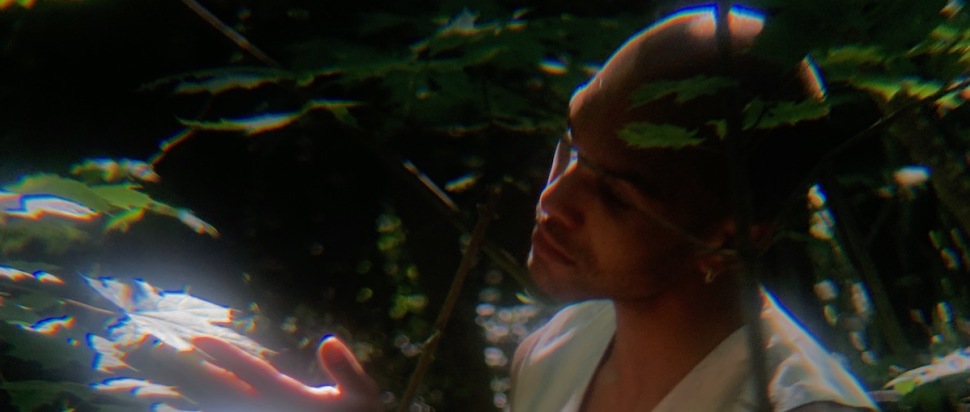Exploring EAF's Associate Artist Programme
For Edinburgh Art Festival 2021, Associate Artist Tako Taal has brought together six of the most interesting artists working currently to respond to a work by Isaac Julien, which pivots on the history of American abolitionist Frederick Douglass
For this Edinburgh Art Festival, Tako Taal has assembled six artists with diverse practices to respond to a film by the artist Isaac Julien, Lessons of the Hour (2019). In this work, Julien’s subject is the American abolitionist Frederick Douglass.
What caught the attention of scholar and creative Sequoia Barnes was Douglass’ trip to Naples with the sculptor Edmonia Lewis. “I don’t know why [they went], all I know is they went to Naples. Two Black people, not necessarily post-slavery are just travelling around Europe... it’s this weird parallel universe to the transatlantic slave trade.” In response, Barnes draws on the artistic lineages of where she grew up in Alabama, particularly the quiltmaking practices of Gee’s Bend. For Barnes, this medium allows a mixing of the radical historical-critical approach of hauntology and Black historical studies. “The quilt is like a portal, set amongst a shrine.”
Artists Francis Dosoo and Matthew Arthur Williams’ respective responses take the form of self-portraiture. This jumps off from Douglass’ push to photograph himself as much as possible, ensuring his own agency in his representation as a Black man. “The work albeit about how we are seen and what narrative that is, is really about two things," explains Williams. "One, erasure. Physical erasure from records and accounts, and erasure from each other. Two, it is holding a moment for generational exchange and knowledge. A cross-generational relationship, and knowledge exchange makes for a kind of anchoring force through times of very active and aggressive systemic oppression. The work with all these subtexts is still saying tenderness.”
In contrast, Francis Dosoo’s works are installed as billboards on Calton Road. In collaboration with the artist and fashion photographer Kamilya Kuspanova, Dosoo has created a triptych of photographic works accompanied by text. “I’m interested in people’s relationships with themselves through religion,” as Dosoo carefully phrases it. The poses and composition of these works draw from images of saints in classical paintings. Dosoo is committed to the transformative potential of images as a way of deepening how people see and understand the world around them, which Dosoo tracks a common line of interest with Frederick Douglass’ use of photography.
The Associate Artist programme also includes a new film work by Camara Taylor, holus-bolus. This work furthers Taylor’s research into the life and death of William Davidson (1781-1820), the son of a Scotsman, the Attorney General of Jamaica and a Black woman. “He has mobility, even if he is poor throughout his life. He comes from what could be retrospectively understood as – not necessarily a Black elite – but a Black mobile class.” The film work centres on the speech Davidson gave in which he pleads his innocence, claiming to have been mistaken for another man of colour when he is tried for his alleged involvement in a radical plot to assassinate cabinet ministers and the Prime Minister. The work that has emerged Taylor describes as “very complicated” and “very strange”, coming from a collaboration with artists Nima Séne, Sulaïman Majali, 皚桐 and writer Shola von Reinhold.
For artist Thulani Rachia, their work arose from an anecdote about Frederick Douglass buying a violin in Edinburgh, and which he played as part of a self-healing practice. This sparked some recognition, as Rachia records melodies while travelling and adjusting to new cities and locations. “[In doing so], I’m creating a safe space for myself in not-so-welcoming built up environments.” These have been transcribed into scores for cellists Simone Seales, Justyna Jablonska, Iain McHugh, Joanna Stark and Dr Claire Garabedian. The scores incorporate long moments of rest for the musicians as a subversion of the usual extractive relationship of audience and performer, as well as including parts written in Rachia’s mother tongue isiZulu alongside conventional Western Italian music notations.
Music and sound come to the fore again in Chizu Anucha's work, in which he sonically imagines the future that would have been imagined by the abolitionists that visited Edinbugh in the 19th century. He specifically takes a cue from Ellen and William Craft, who disguised themselves, she as a white male slaveholder and William as an enslaved servant. He let those stories sit while recording in the old Georgian building, "to occupy the space and be present with all that in mind.... [in] an old Georgian building made using funds that were acquired by the oppression of people." The question that Anucha came back to: "If people were doing a gig or show two hundred years ago, if they were imagining utopian futures, what would they be? I'm thinking about now and gigs and how Black people occupy white institutions now, versus hundreds of years from now. In a utopian sense, what would be imagined and how could we try to embody that?"
What happens to desire ..., various venues and online, until 29 Aug, free, part of Edinburgh Art Festival
Chizu Anucha, Sequoia Barnes, Francis Dosoo, Thulani Rachia, Camara Taylor and Matthew Arthur Williams discuss their work with Tako Taal on Wed 4 Aug at 5pm, free tickets available here
edinburghartfestival.com/the-festival/commissions-programme/associate-artist-programme/
